Chart Color Schemes
est. as @ -- *
ABS ERP | -- people | --
2021 Census | -- people
Sales Activity
Curious about local property values? Filter the chart to assess the volume and appreciation (including resales) trends and regional comparisons, or scroll to the map below view this information at an individual property level.
Find a Recent Sale
Sales Detail
Population
Mallala has seen population growth performance typically on par with national averages when looking at short and medium term trends
Mallala's population, as of August 2025, is approximately 3,550. This figure represents a growth of 215 people since the 2021 Census, which reported a population of 3,335. The increase was inferred from the ABS estimated resident population of 3,523 in June 2024 and an additional 30 validated new addresses since the Census date. Mallala's population density is 4.2 persons per square kilometer. Between 2021 and 2025, Mallala's growth rate of 6.4% surpassed the SA4 region's 5.8%, indicating it as a growth leader in the area. Interstate migration contributed around 60.3% to Mallala's population gains during this period.
AreaSearch uses ABS/Geoscience Australia projections for each SA2 area, released in 2024 with a base year of 2022. For areas not covered by this data and years post-2032, the SA State Government's Regional/LGA projections are adopted, adjusted using a weighted aggregation method from LGA to SA2 levels. Future demographic trends project an above median population growth for locations outside capital cities. Mallala is expected to expand by 629 persons to reach approximately 4,179 by 2041, reflecting a total increase of 17.0% over the 17-year period.
Frequently Asked Questions - Population
Development
Residential development activity is slightly higher than average within Mallala when compared nationally
Mallala has seen approximately 23 new homes approved annually. Between FY-21 and FY-25118 homes were approved, with an additional 4 approved so far in FY-26. On average, 1.7 people have moved to the area per dwelling built over these five years.
This suggests a balanced supply and demand, maintaining stable market conditions. The average construction cost of new dwellings is $331,000, aligning with regional patterns. In terms of commercial development, $10.9 million in approvals were registered this financial year, indicating moderate levels of activity.
Compared to the Rest of SA, Mallala has seen slightly more development, with 14.0% above the regional average per person over the past five years. This maintains good buyer choice while supporting existing property values. Recent building activity consists solely of standalone homes, preserving the area's traditional low-density character and appealing to those seeking space for families. The location currently has approximately 189 people per dwelling approval, indicating an expanding market. Looking ahead, Mallala is projected to grow by 602 residents through to 2041. Current development appears well-matched to future needs, supporting steady market conditions without extreme price pressure.
Frequently Asked Questions - Development
Infrastructure
Mallala has emerging levels of nearby infrastructure activity, ranking in the 28thth percentile nationally
Changes to local infrastructure significantly influence an area's performance. AreaSearch has identified 15 projects likely to impact the area. Notable projects include Gracewood Estate, Eden Two Wells, Liberty Two Wells, and Grevillea Grove. The following details projects likely to be most relevant.
Professional plan users can use the search below to filter and access additional projects.
INFRASTRUCTURE SEARCH
 Denotes AI-based impression for illustrative purposes only, not to be taken as definitive under any circumstances. Please follow links and conduct other investigations from the project's source for actual imagery. Developers and project owners wishing us to use original imagery please Contact Us and we will do so.
Denotes AI-based impression for illustrative purposes only, not to be taken as definitive under any circumstances. Please follow links and conduct other investigations from the project's source for actual imagery. Developers and project owners wishing us to use original imagery please Contact Us and we will do so.
Frequently Asked Questions - Infrastructure
Riverlea Estate (Buckland Park Township)
South Australia's largest master-planned community, spanning over 1,300ha. The project is planned to deliver 12,000 homes and house over 40,000 people over the next 20 years. It will include a town centre, the $80M Palms Shopping Village, schools, community facilities, parks, lakes, and over 450ha of open space, aiming to create 10,000 jobs. Construction is underway with various stages in progress and some completed.
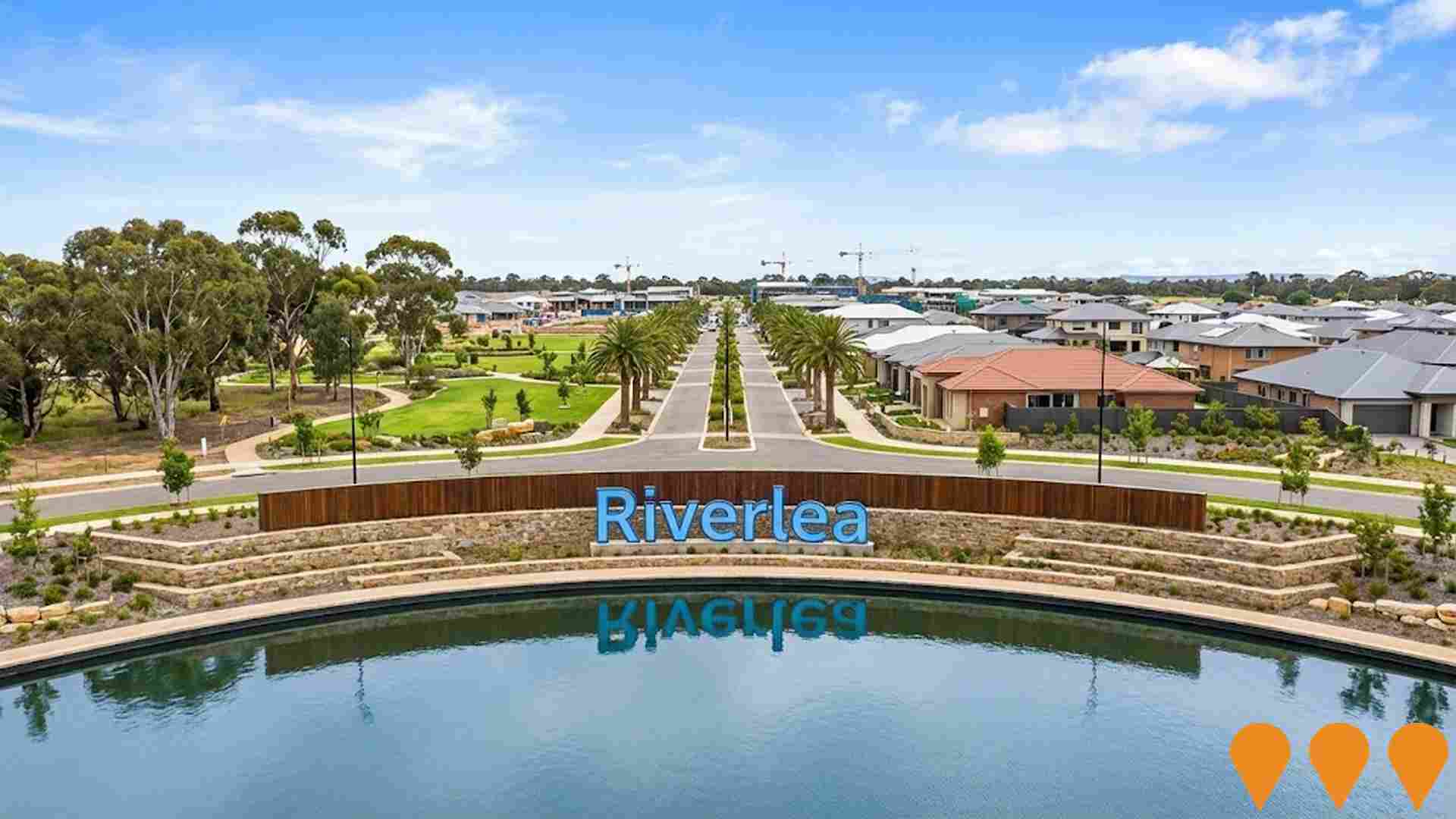
Northern Connector
Six-lane, 15.5 kilometre motorway providing vital freight and commuter link between Northern Expressway, South Road Superway and Port River Expressway. South Australia's first major concrete motorway and widest in the country. Includes 16 kilometres of shared cyclist and pedestrian paths connecting to Stuart O'Grady Bikeway. Features four major interchanges, intelligent transport systems, wetland restoration and Indigenous-inspired design elements. Opened March 7, 2020.

Angle Vale Water and Sewer Infrastructure
SA Water project to deliver permanent trunk water and sewer infrastructure to the Angle Vale / Riverlea growth area in Adelaide's north. Works include approximately 5.2 km of water mains and 0.8 km of sewer mains, pumping stations and rising mains to replace interim tankering arrangements and enable thousands of new homes.
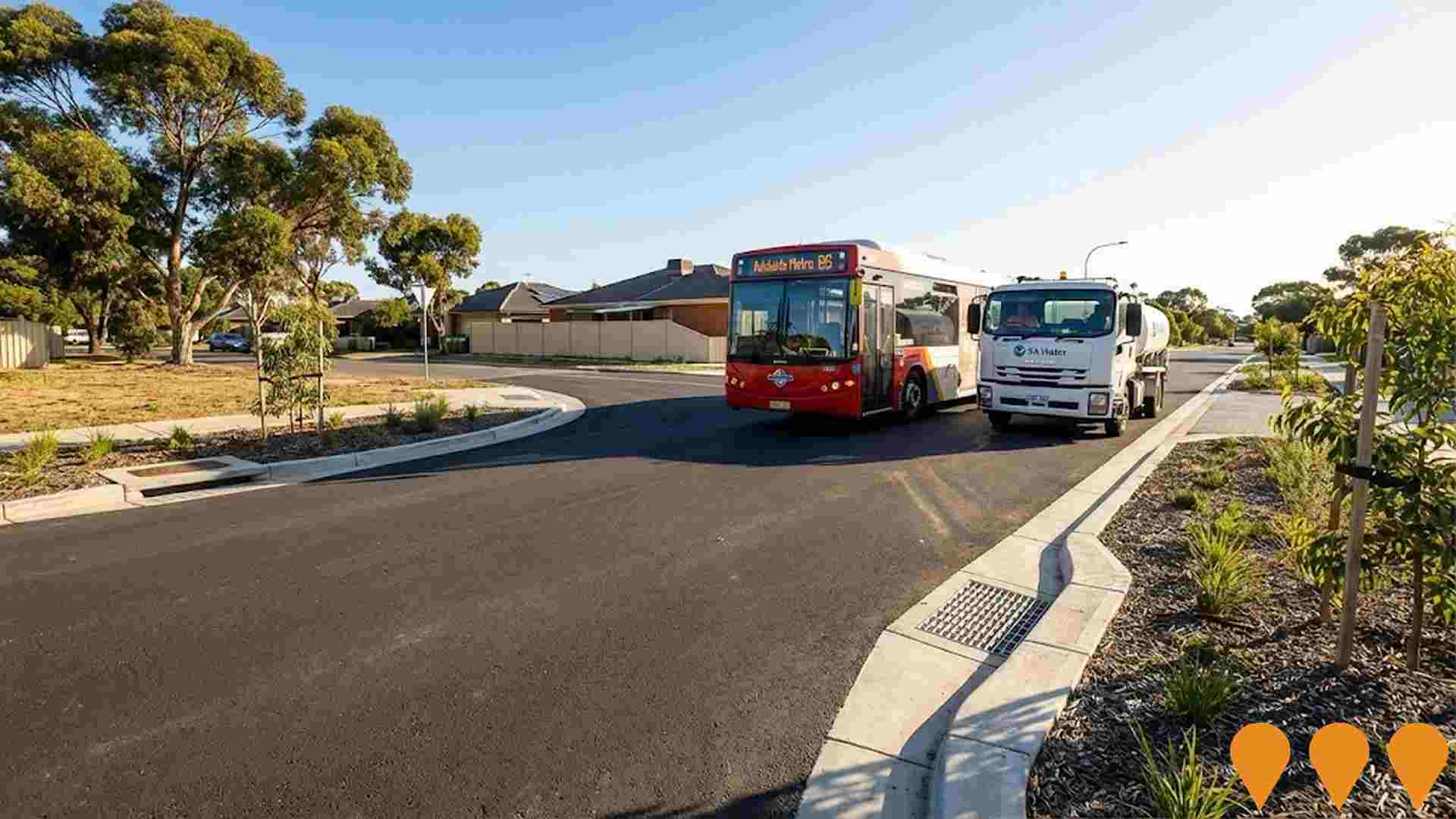
Two Wells Town Centre
A $150 million mixed-use town centre development by Leyton Property on an 8-ha site fronting Old Port Wakefield Road, Two Wells. Stage 1 (Drakes supermarket 3,500 sqm, specialty shops, medical centre, childcare, community facility and 400+ car parks) commenced construction in November 2025 following development approval in March 2025. Future stages will deliver main-street mixed-use retail, commercial and potential residential outcomes enabled by an approved Code Amendment. Staged completion expected 2026-2029.
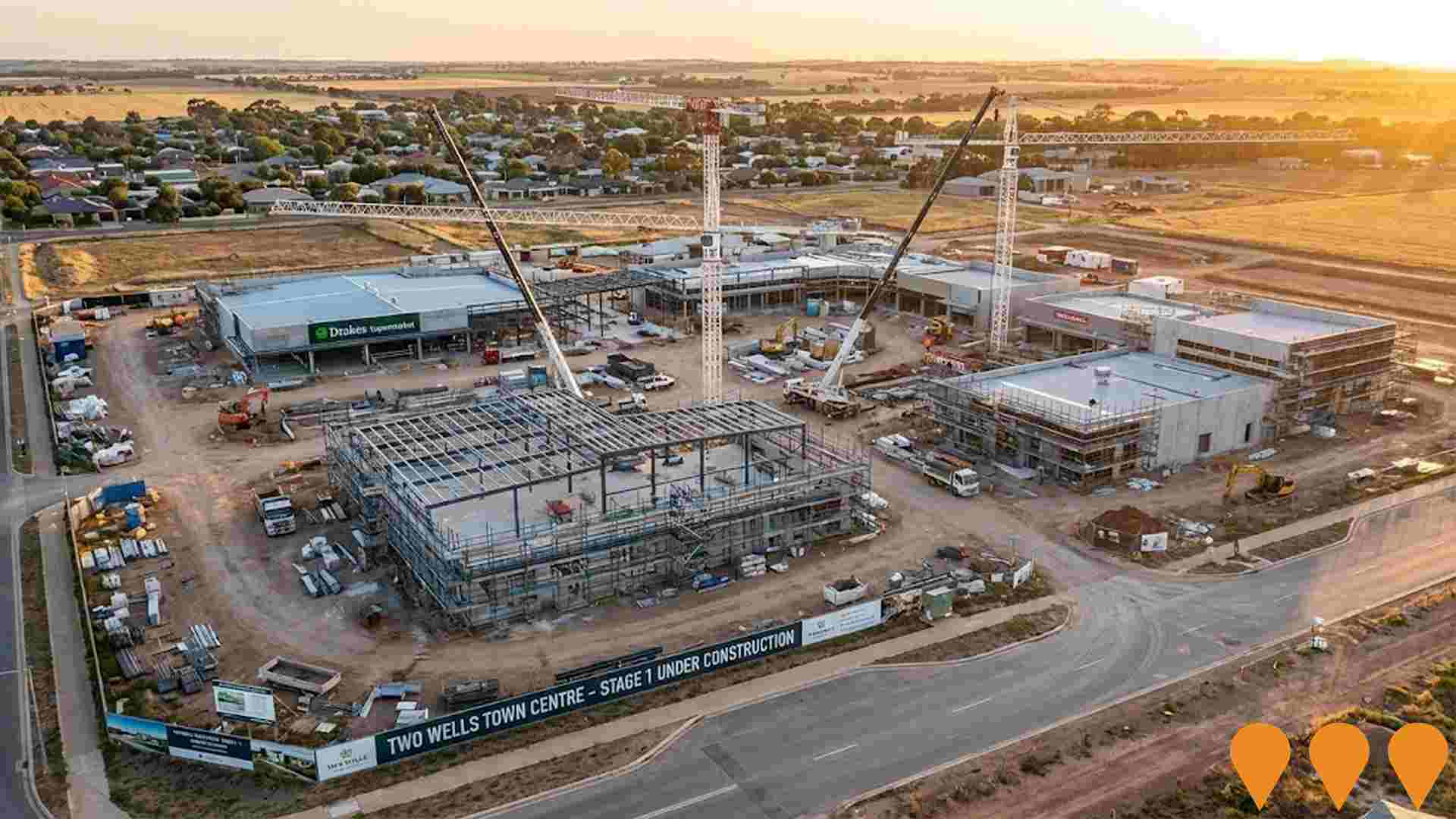
Palms Shopping Village Riverlea
First retail center for Riverlea community featuring supermarkets, specialty stores, and community services. Part of the broader Riverlea masterplan development.
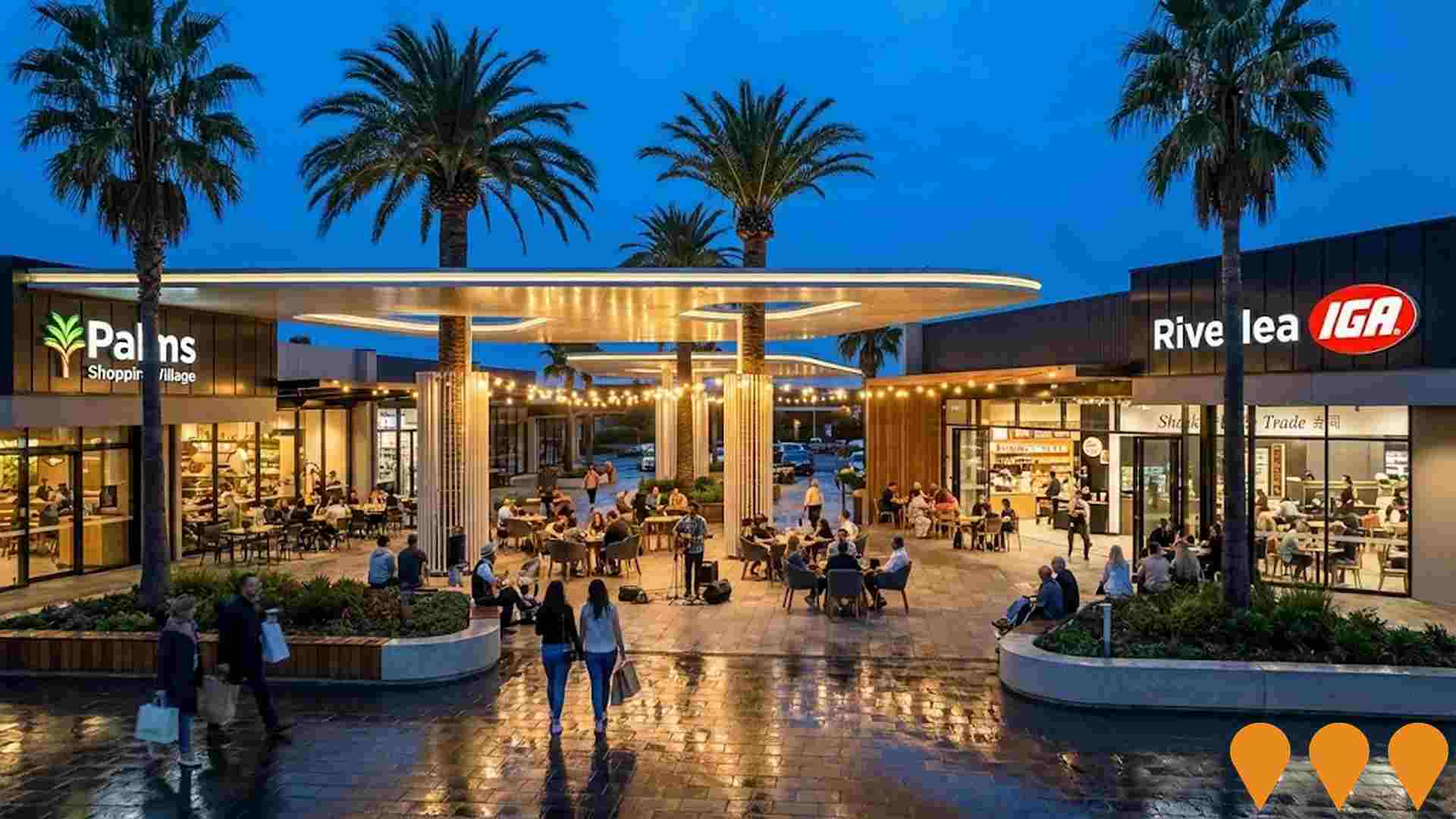
Riverbanks Estate, Angle Vale
Riverbanks is a large master planned house and land community in Angle Vale East, delivering more than 2,000 new homes, parks and open space within walking distance of Riverbanks College B-12 and the Angle Vale town centre. The estate is being delivered in stages with land now selling and civil and housing construction underway.
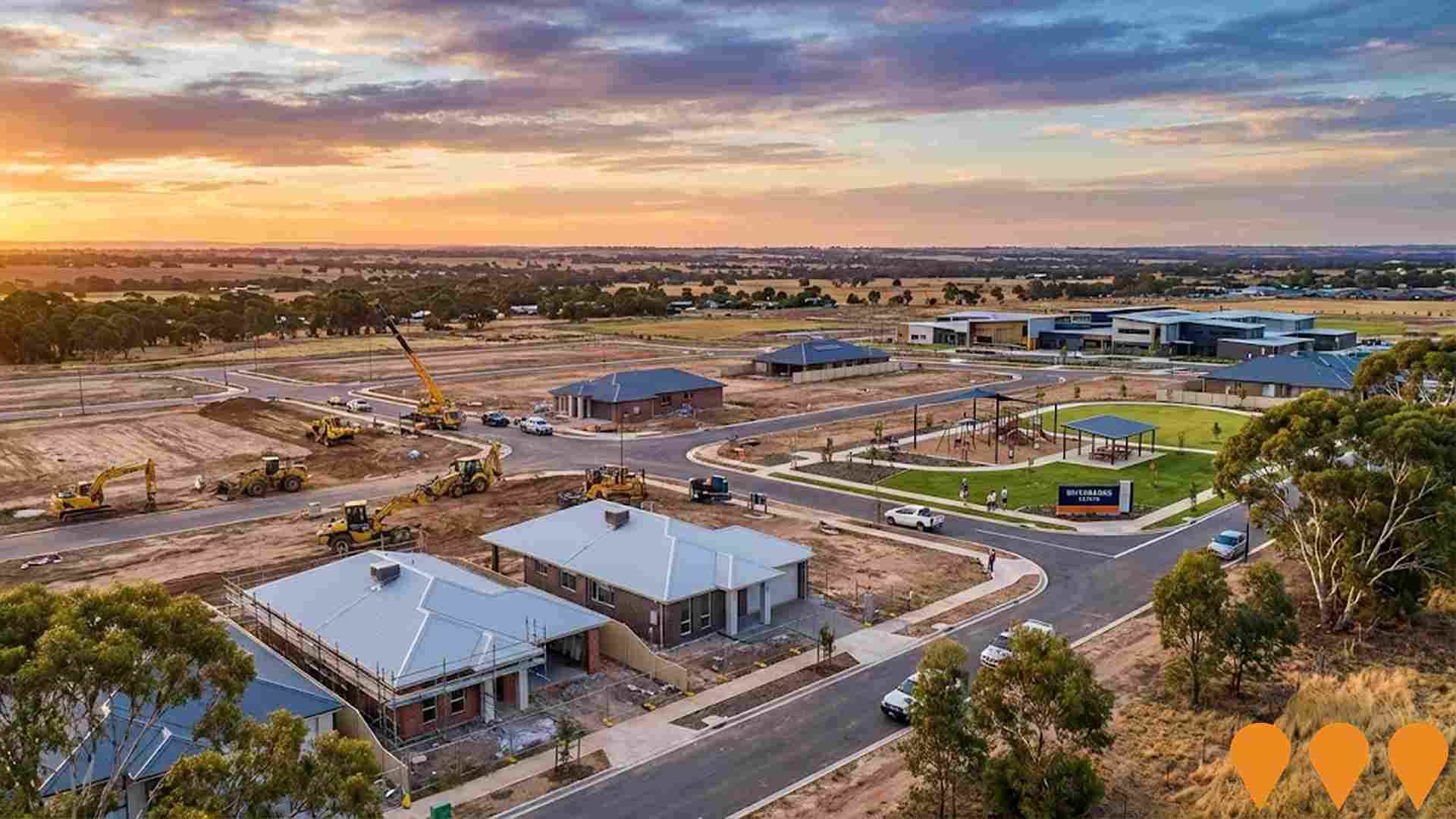
Trinity College Gawler River / Angle Vale Campus
Planning for the long term role of Trinity College's Gawler River campus in Angle Vale as a major northern education hub supporting the Riverbanks and Angle Vale growth areas, building on its existing Reception to Year 10 facilities and extensive grounds.
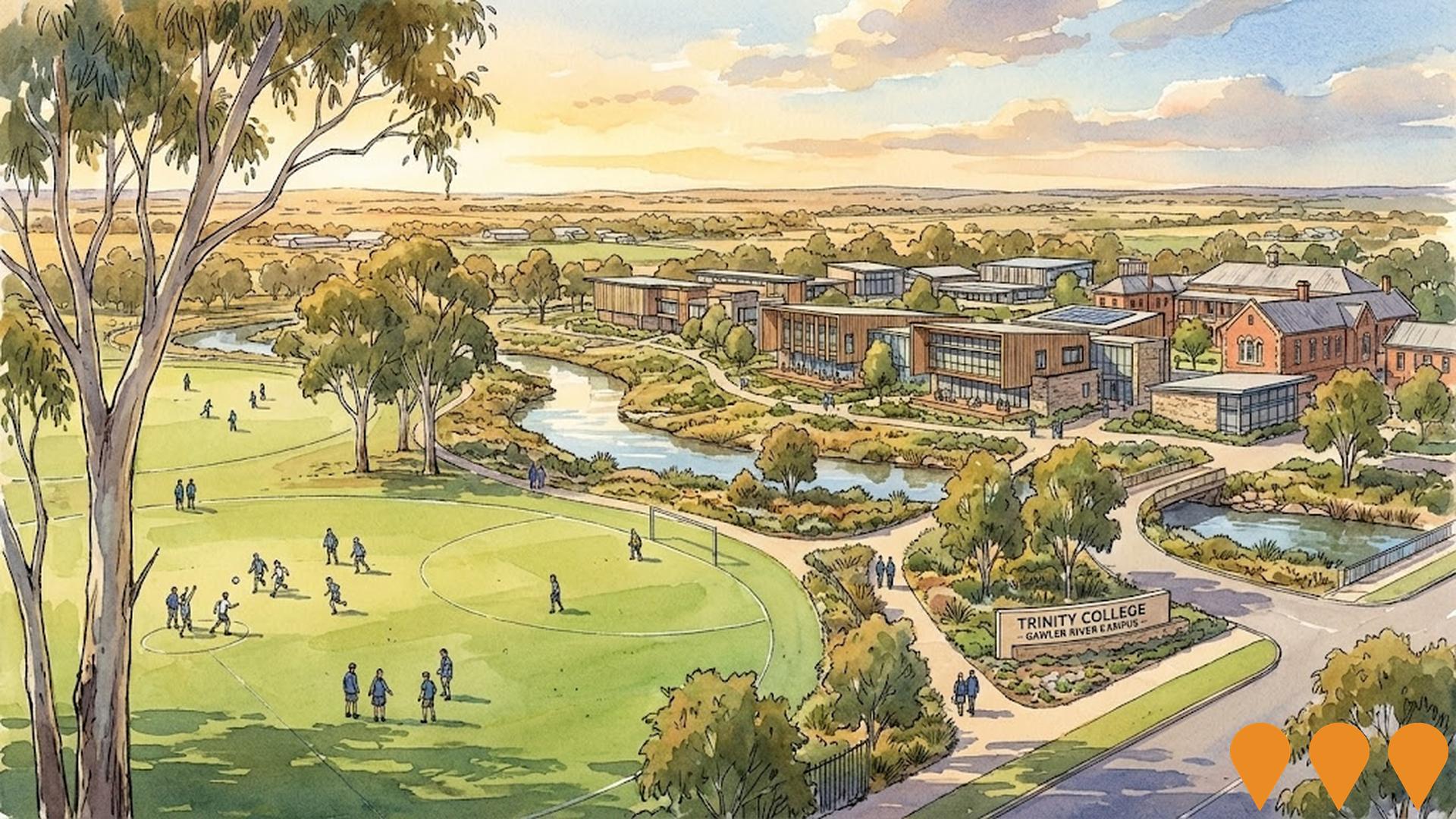
Virginia Township Expansion
Expansion of Virginia township with Playford Growth Area Structure Plan proposing up to 580 hectares to the north, west and south of existing township for development. Located in Northern Adelaide Plains positioned for intensive food production.

Employment
AreaSearch assessment indicates Mallala faces employment challenges relative to the majority of Australian markets
Mallala has a balanced workforce with representation across various sectors. As of June 2025, the unemployment rate is 5.2%.
There are 1,729 residents employed, which is 0.6% higher than Rest of SA's rate of 4.6%. Workforce participation stands at 57.6%, slightly above Rest of SA's 54.1%. Key employment industries include agriculture, forestry & fishing, construction, and health care & social assistance. The area has a notable concentration in transport, postal & warehousing, with employment levels at 2.3 times the regional average.
However, health care & social assistance has limited presence, with 9.7% employment compared to 13.9% regionally. There appears to be limited local employment opportunities based on Census data. In the 12-month period ending June 2025, labour force increased by 0.1%, while employment declined by 2.0%, leading to a rise in unemployment rate of 2.0 percentage points. This contrasts with Rest of SA where employment fell by 1.2% and unemployment rose by 1.2 percentage points. Jobs and Skills Australia's national employment forecasts from May 2025 project overall growth of 6.6% over five years and 13.7% over ten years. Applying these projections to Mallala's employment mix suggests local growth of approximately 5.1% over five years and 11.2% over ten years, though these are simple extrapolations for illustrative purposes and do not account for localised population projections.
Frequently Asked Questions - Employment
Income
Income levels sit below national averages according to AreaSearch assessment
AreaSearch's latest postcode level ATO data for financial year 2022 shows that Mallala has lower income compared to national averages. The median income is $50,549 and the average income stands at $60,096. This differs from Rest of SA's figures where the median income is $46,889 and the average income is $56,582. Based on Wage Price Index growth of 12.83% since financial year 2022, current estimates for Mallala would be approximately $57,034 (median) and $67,806 (average) as of September 2025. Census data reveals that household, family and personal incomes in Mallala rank modestly, between the 25th and 25th percentiles. Income distribution shows that the largest segment comprises 32.6% earning $1,500 - $2,999 weekly (1,157 residents), similar to the regional pattern where 27.5% fall within this range. Housing costs are manageable with 88.4% retained, but disposable income is below average at the 32nd percentile.
Frequently Asked Questions - Income
Housing
Mallala is characterized by a predominantly suburban housing profile, with above-average rates of outright home ownership
Mallala's dwelling structure, as per the latest Census, consisted of 96.0% houses and 4.0% other dwellings (semi-detached, apartments, 'other' dwellings). This compares to Non-Metro SA's 94.6% houses and 5.4% other dwellings. Home ownership in Mallala was at 40.2%, with mortgaged dwellings at 44.2% and rented dwellings at 15.6%. The median monthly mortgage repayment was $1,150, below Non-Metro SA's average of $1,400. Median weekly rent in Mallala was $265, compared to Non-Metro SA's $285. Nationally, Mallala's mortgage repayments were significantly lower than the Australian average of $1,863, and rents were substantially below the national figure of $375.
Frequently Asked Questions - Housing
Household Composition
Mallala features high concentrations of group households, with a fairly typical median household size
Family households constitute 67.9% of all households, including 28.7% couples with children, 28.8% couples without children, and 9.5% single parent families. Non-family households comprise the remaining 32.1%, with lone person households at 26.8% and group households making up 5.3%. The median household size is 2.5 people, which aligns with the Rest of SA average.
Frequently Asked Questions - Households
Local Schools & Education
Mallala faces educational challenges, with performance metrics placing it in the bottom quartile of areas assessed nationally
The area's university qualification rate is 10.0%, significantly lower than the Australian average of 30.4%. This presents both a challenge and an opportunity for targeted educational initiatives. Bachelor degrees are most common at 7.4%, followed by postgraduate qualifications (1.4%) and graduate diplomas (1.2%). Trade and technical skills are prominent, with 39.9% of residents aged 15+ holding vocational credentials - advanced diplomas (7.4%) and certificates (32.5%).
Educational participation is high at 29.1%, including 13.4% in primary education, 8.2% in secondary education, and 2.1% pursuing tertiary education. Mallala Primary School serves the area with an enrollment of 127 students as of a recent date. The school focuses exclusively on primary education, with secondary options available in nearby areas. Local school capacity is limited at 3.6 places per 100 residents compared to the regional average of 13.1, leading many families to travel for schooling.
Frequently Asked Questions - Education
Schools Detail
Nearby Services & Amenities
Transport
No public transport data available for this catchment area.
Frequently Asked Questions - Transport
Transport Stops Detail
Health
Health performance in Mallala is well below average with prevalence of common health conditions notable across both younger and older age cohorts
Mallala faces significant health challenges, with common conditions prevalent across both younger and older age groups. Approximately half of Mallala's total population (around 1,757 people) has private health cover, lower than the national average of 55.3%.
The most frequent medical conditions are arthritis and asthma, affecting 9.5% and 9.5% of residents respectively. About 63.4% of Mallala's population reports no medical ailments, slightly below the Rest of SA figure of 64.6%. Around 19.8% of Mallala's residents are aged 65 and over (702 people), lower than the 22.8% in Rest of SA. Health outcomes among seniors present some difficulties but perform better than the general population in health metrics.
Frequently Asked Questions - Health
Cultural Diversity
Mallala ranks below the Australian average when compared to other local markets across a number of language and cultural background related metrics
Mallala's population showed low cultural diversity, with 83.8% being citizens, 85.0% born in Australia, and 93.5% speaking English only at home. Christianity was the predominant religion, comprising 41.4%. Buddhism was overrepresented compared to the rest of South Australia (SA), making up 1.4% versus 0.5%.
The top three ancestry groups were Australian (34.8%), English (34.2%), and Scottish (6.5%). Notably, Welsh (0.7%) and German (4.4%) were overrepresented compared to regional averages of 0.5% and 14.2%, respectively. Maltese was also slightly overrepresented at 0.4%.
Frequently Asked Questions - Diversity
Age
Mallala hosts an older demographic, ranking in the top quartile nationwide
Mallala's median age is 43, which is significantly lower than the Rest of SA average of 47 but substantially higher than the national average of 38. The age profile shows that those aged 15-24 are particularly prominent, making up 12.6% of the population, while those aged 75-84 are comparatively smaller at 6.3%. Between 2021 and the present, the proportion of 15 to 24-year-olds has grown from 10.1% to 12.6%, while the 45 to 54 age group has declined from 13.4% to 12.0% and the 25 to 34 age group has dropped from 11.7% to 10.4%. By 2041, Mallala's age composition is expected to shift notably. The 15 to 24 age group is projected to grow by 26%, adding 114 people and reaching a total of 560 from the current 445. Meanwhile, the 55 to 64 age group is expected to grow at a more modest rate of 1%, adding only 7 residents.


